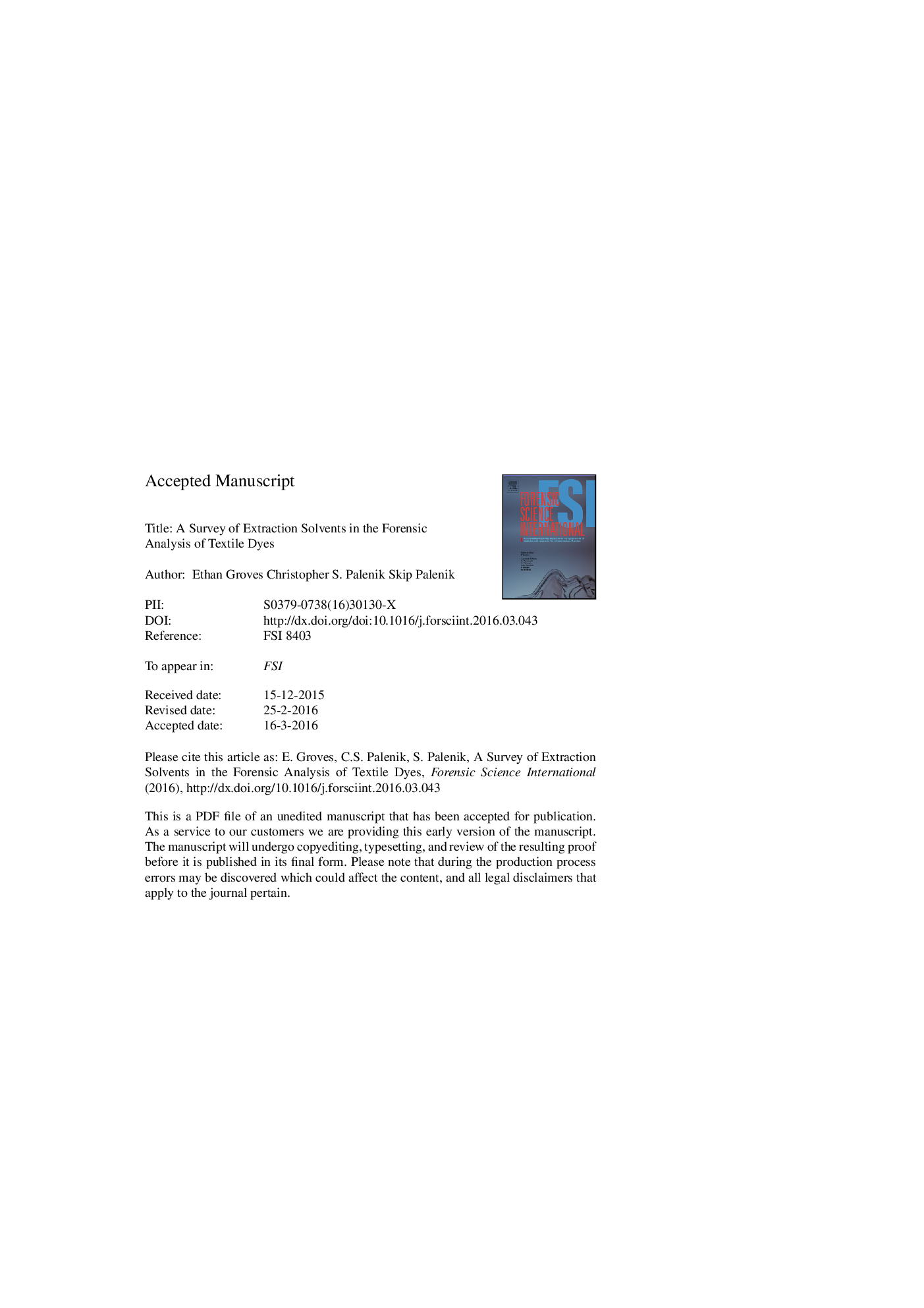| Article ID | Journal | Published Year | Pages | File Type |
|---|---|---|---|---|
| 4760386 | Forensic Science International | 2016 | 22 Pages |
Abstract
The characterization and identification of dyes in fibers can be used to provide investigative leads and strengthen associations between known and questioned items of evidence. The isolation of a dye from its matrix (e.g., a textile fiber) permits detailed characterization, comparison and, in some cases, identification using methods such as thin layer chromatography in conjunction with infrared and Raman spectroscopy. A survey of dye extraction publications reveals that pyridine:water (4:3) is among the most commonly cited extraction solvent across a range of fiber and dye chemistries. Here, the efficacy of this solvent system has been evaluated for the extraction of dyes from 172 commercially prevalent North American textile dyes. The evaluated population represents seven dye application classes, 18 chemical classes, and spans nine types of commercial textile fibers. The results of this survey indicate that â¼82% of the dyestuffs studied are extractable using this solvent system. The results presented here summarize the extraction efficacy by class and fiber type and illustrate that this solvent system is applicable to a wider variety of classes and fibers than previously indicated in the literature. While there is no universal solvent for fiber extraction, these results demonstrate that pyridine:water represents an excellent first step for extracting unknown dyes from questioned fibers in forensic casework.
Related Topics
Physical Sciences and Engineering
Chemistry
Analytical Chemistry
Authors
Ethan Groves, Christopher S. Palenik, Skip Palenik,
